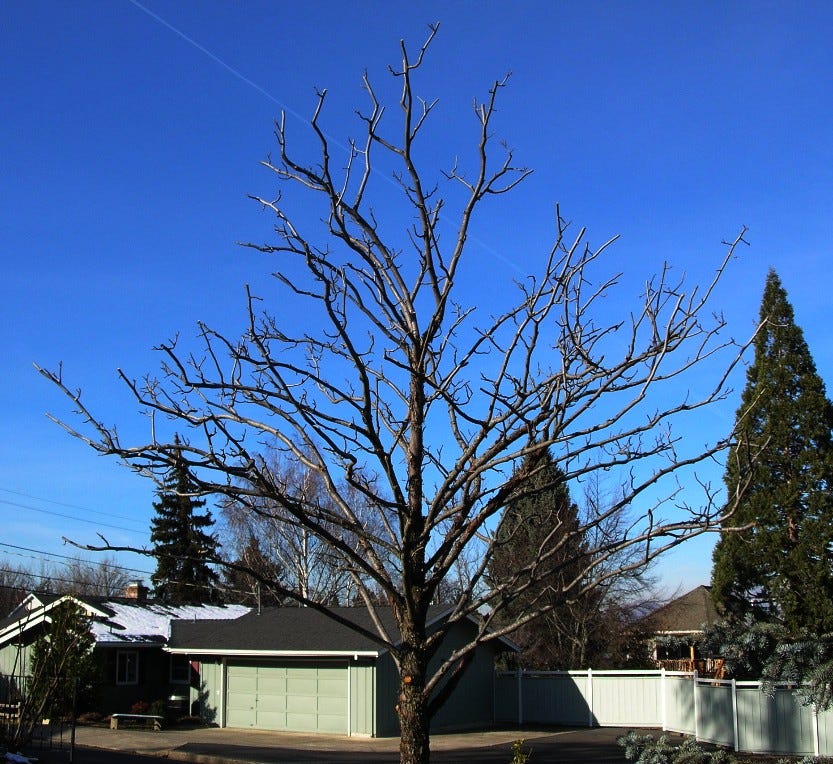Winter Dormancy Pruning
Dormancy in the winter is the best time to do pruning... especially for trees, shrubs, and woody plants. This includes evergreen plants too because they are conducting photosynthesis at a reduced rate.
Dormancy Basics
Dormancy starts ramping up in the fall as things cool down. Plants send energy downward into their deeper roots, and the liquid in their cells becomes super-cooled or saturated with solute, like antifreeze. Scales form over the buds for protection to keep them from drying out and from freezing temperatures in climates where this applicable.
The woody plants in particular... their roots don't enter full dormancy. They become quiescent... meaning that adverse environmental conditions like freezing trigger a dormant state that these type of plants can break once conditions improve. This makes sense because roots are breathing organs. Something I've mentioned in a previous post, emphasizing the importance of planting plants high to establish an elevated root zone for breathe ability.
Timing is everything when it comes to dormancy. The main thing to remember here is that if a plant enters dormancy too early, it loses the opportunity to photosynthesize, grow, and store more energy before settling in for the season. It could eventually be out-competed by better adapted plants. And if it waits too long, it could be damaged by frost and desiccation - extreme dryness.
In Summary
You can do light pruning all year around to maintain walkways and keep your garden shaped up, but the major cuts and/or a complete restructuring/pruning reset is best done in the winter dormancy for trees, shrubs, and woody plants.
Straight Up & Free with James D is a reader supported publication.
If you found this valuable and educational, and appreciate the craftsmanship and care I bring in providing this content, please consider upgrading your subscription to support my work. You can also give a gift subscription, or make a one time donation.
Thank you!


